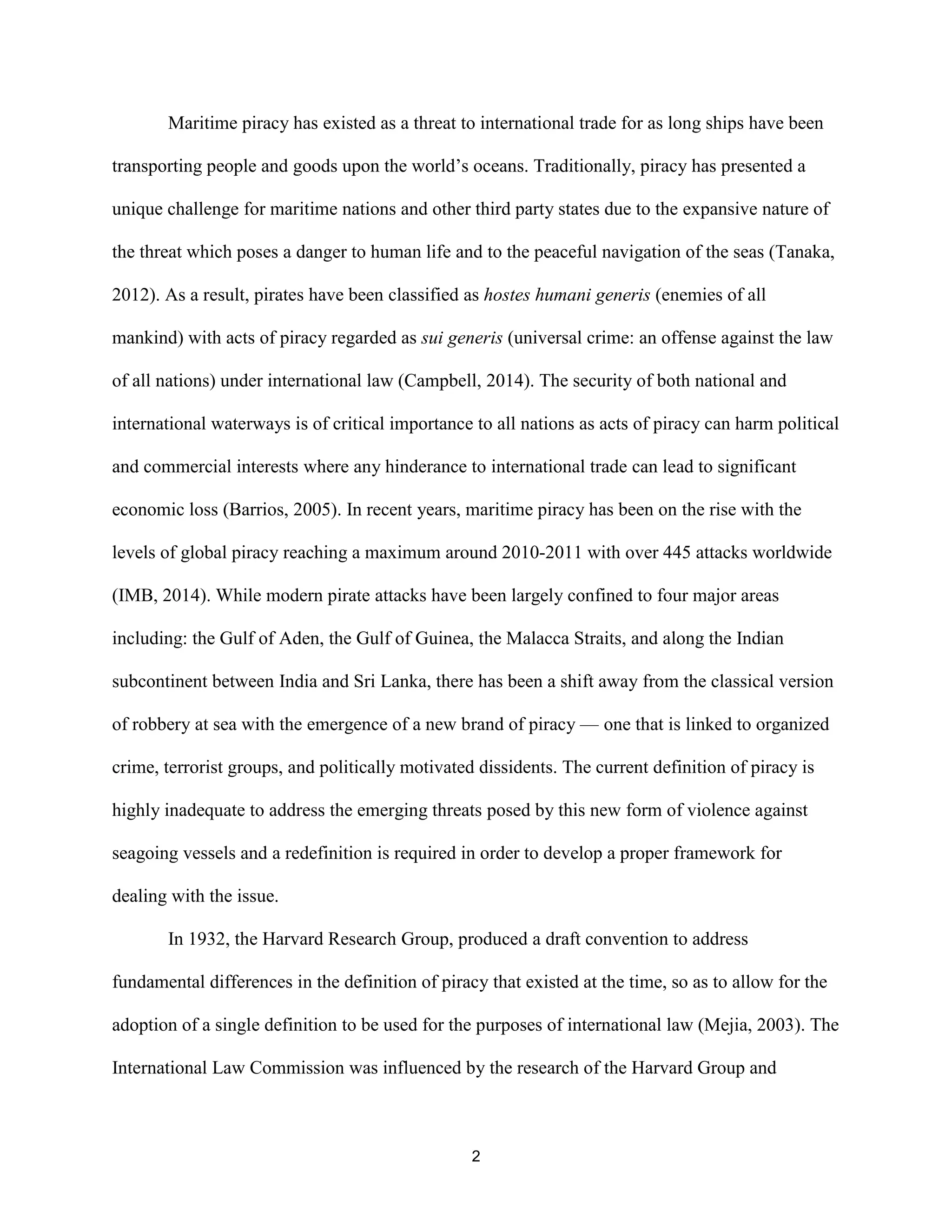The document discusses the definition of piracy under Article 101 of the 1982 UN Convention on the Law of the Sea (UNCLOS). It argues the definition is too narrow and does not account for modern forms of maritime violence. The definition requires acts be committed for private ends, from one private ship to another, and on the high seas. This excludes many historical acts of piracy and limits enforcement. The document examines alternative frameworks under the 1988 SUA Convention but notes its limitations. It concludes a new framework is needed to define piracy more broadly and establish clear responsibilities for addressing modern maritime crimes.






